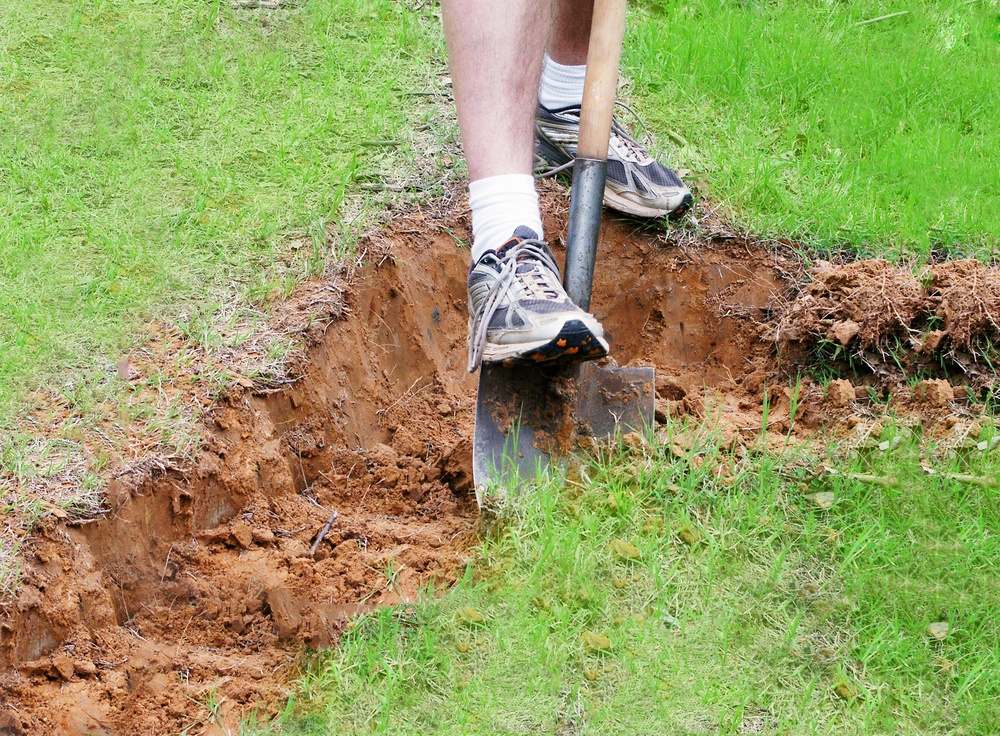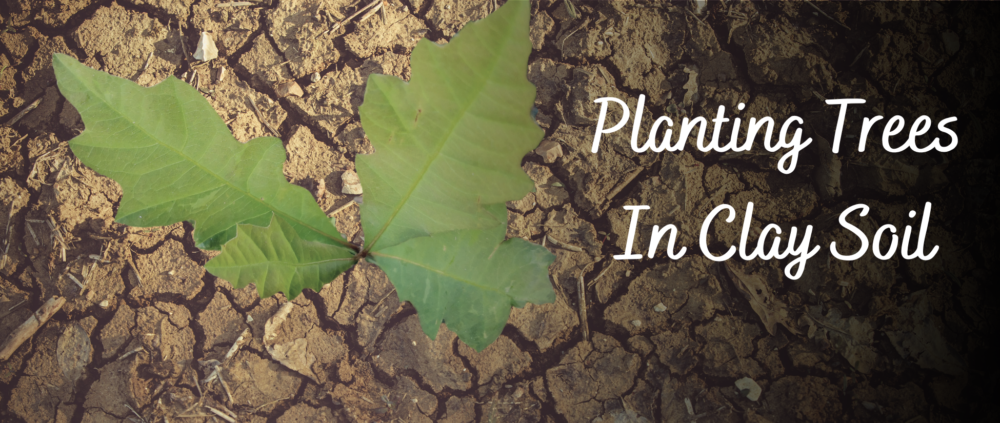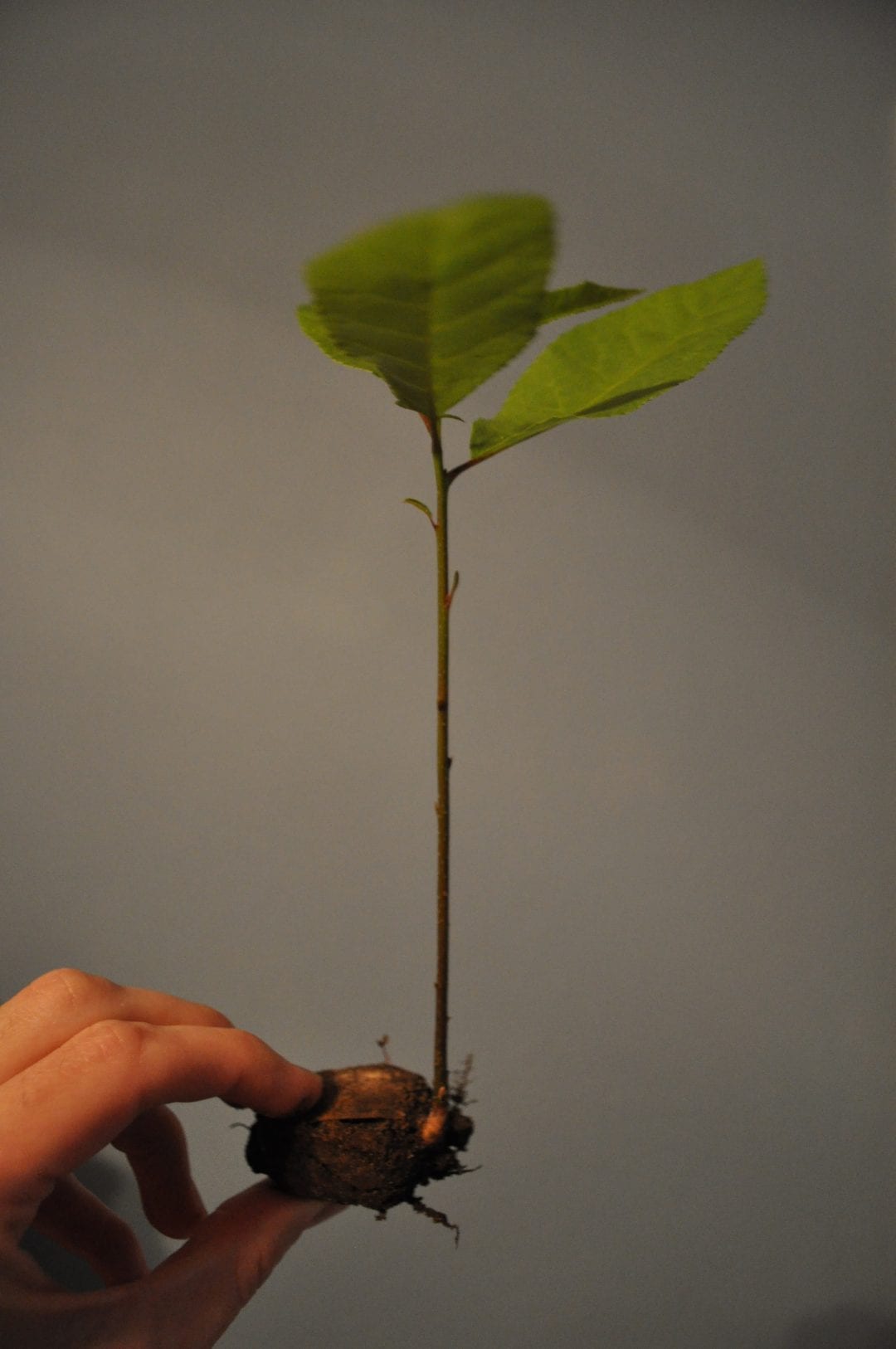Decoding the Challenges of Clay Soil
Heavy soil, particularly clay, presents significant obstacles for trees. Its dense nature leads to poor drainage. This poor drainage results in waterlogging. The compacted soil also restricts air circulation. These conditions make it difficult for roots to grow. Essential nutrients can become locked, hindering a tree’s access. This lack of access will impact overall tree health and growth. The best trees for clay soil need to withstand these challenging conditions.
The tight structure of clay soil prevents roots from easily penetrating it. Roots struggle to establish themselves effectively. Poor drainage can suffocate the roots. The lack of air prevents them from absorbing necessary resources. This leads to weakened trees. They become more vulnerable to diseases. The combination of poor drainage and compacted soil creates a harsh environment. It is a environment that can impede the growth of many trees.
How to Improve Drainage for Your Trees in Clay
Preparing the planting area correctly is crucial when dealing with heavy clay soil. The first step involves digging a planting hole that is at least twice the width of the tree’s root ball. This wider hole will help the roots expand more easily. Importantly, the hole should be no deeper than the root ball itself. A common mistake is digging too deep, which can lead to drainage issues and root rot. Next, amending the clay soil with organic matter is essential. This process will help create an environment where even the best trees for clay soil can thrive. Mix in plenty of compost or well-rotted manure into the excavated soil before backfilling. These materials will improve the soil’s structure and help with aeration and drainage. This step will improve the long-term health of your tree. It will also give it the best chance at establishing strong roots.
Before planting, there are a few other drainage tips to consider. One simple approach is to break up compacted soil around the planting area. Using a garden fork or tiller, loosen the soil to a depth of about 12 inches. This action will encourage better water flow. If the area has severe drainage issues, creating a slight mound or raised bed for the tree might be a better approach. This method will help prevent water from pooling around the base of the tree. Additionally, consider installing a drainage system if the area suffers from excessive waterlogging. A system can be as simple as a French drain or more complex drainage pipes. Remember that the goal is to create an environment where water does not collect and create root suffocation. This helps to ensure the best trees for clay soil get the drainage they need. A proper drainage will provide a healthy environment for your tree’s growth, allowing it to thrive over the long term.
Oak Varieties for Heavy Clay
When considering the best trees for clay soil, oak trees often stand out due to their adaptability. Several oak varieties demonstrate a remarkable tolerance for heavy, compacted soil. The Willow Oak, with its slender, willow-like leaves, is a fantastic choice. This tree tolerates poor drainage and compacted conditions. It also provides beautiful fall color. The Pin Oak, another clay tolerant oak tree, is known for its pyramidal shape and vibrant red fall foliage. It is able to withstand the challenges of heavy clay. Shingle Oak is a great option, with its unlobed leaves, unlike most other oaks. It is also known to handle the heavy soil conditions. These clay tolerant oak trees showcase the resilience of nature. They make them excellent options for gardens with clay.
These oaks not only survive but thrive in areas with heavy soil. The Willow Oak can tolerate periods of flooding. The Pin Oak adapts well to different pH levels. The Shingle Oak exhibits strong resistance to pests and diseases. They are some of the best trees for clay soil. When choosing an oak, carefully consider the specific conditions of your area. These clay tolerant oak trees offer a range of sizes and characteristics. The right oak will thrive in your clay soil and improve your landscape. When you select these trees you will have a beautiful and healthy garden for years to come. The different shape, color, and resistance of each type will fit the different needs of your garden. These trees will grow strong and add value to your garden.
Maple Trees: A Good Pick for Clay Soil
Maple trees are another excellent choice for gardens with heavy clay soil. Several maple varieties exhibit a remarkable ability to thrive in these challenging conditions. The Red Maple (Acer rubrum) is well-known for its vibrant fall color and tolerance for wet, compacted soil. Its adaptability makes it a popular choice where drainage might be an issue. Another excellent option is the Freeman Maple (Acer x freemanii), a hybrid that combines the best qualities of the Red and Silver Maple. It demonstrates good clay tolerance and rapid growth. The Trident Maple (Acer buergerianum) is a smaller, more ornamental option that also does well in heavy clay. It has attractive, three-lobed leaves and a compact growth habit that fits well in smaller gardens. These species showcase how well-suited some maple trees are to clay-heavy environments, and are considered some of the best trees for clay soil.
When selecting maple trees for clay, it’s essential to consider their mature size. Red Maples can grow quite large, while Trident Maples will remain smaller. Consider the specific needs of your landscape before making your final decision. The root system of maples is typically less prone to issues in clay. This is because they don’t have a large taproot that struggles to penetrate the dense soil. They have shallow, more fibrous root systems that make them better able to absorb water and nutrients. This makes them more successful in the compacted nature of clay soil. Remember that even the best trees for clay soil need proper planting techniques, which includes using organic matter. This will enhance their ability to thrive in this difficult type of soil.
Choosing the right maple tree can provide long-lasting beauty to your garden. With the wide range of varieties, you can find an appropriate one that not only survives but also flourishes in clay. The Red Maple’s vibrant fall color can brighten any landscape. The Freeman Maple’s impressive growth will provide ample shade, and the Trident Maple’s smaller size and ornamental leaves are an eye catcher. These maples show the adaptability and resilience that makes them a solid option for those dealing with heavy clay. They are among the best trees for clay soil and provide beauty and practicality to your garden. Careful selection will help in ensuring the health and longevity of these plants. Always research the specific needs of your maple tree to help provide it with the best possible care.
River Birch and Other Adaptable Choices for Clay
Expanding the selection of trees that thrive in clay, the River Birch emerges as a fantastic option. This tree is particularly well-suited to heavy, poorly drained soils. River Birch trees boast beautiful, peeling bark that adds visual interest to any landscape. Its tolerance to wet conditions makes it ideal for areas where other trees might struggle. This characteristic allows it to establish itself and flourish where other trees fail. The River Birch showcases the adaptability that many gardeners need when dealing with clay. It has a relatively fast growth rate and can be an amazing shade tree.
Beyond the River Birch, several other adaptable trees perform exceptionally well in clay soil. The Eastern Redbud is one such tree, admired for its early spring display of vibrant pink flowers. It can manage heavy soils and adds a burst of color to the garden, making it a versatile choice. Bald Cypress is another remarkable tree that can tolerate clay soil, and even thrive in wet conditions. Unlike most conifers, it is deciduous and it displays an orange-red color in autumn. Its unique appearance and adaptability make it an attractive option for challenging locations. These trees offer diverse aesthetic and functional benefits and represent some of the best trees for clay soil. They each offer unique features while addressing the challenges of heavy soil.
These adaptable options, including the River Birch, Eastern Redbud and Bald Cypress, demonstrate how to make the most of difficult clay soils. These trees exhibit unique qualities that make them some of the best trees for clay soil. Their varied shapes, sizes, and seasonal interest offer gardeners many possibilities. With these selections, it’s possible to create a beautiful and thriving landscape, despite the challenges of clay. Choosing the right trees ensures success and a healthy garden. The key lies in selecting plants that are naturally equipped to handle the specific conditions of clay soil. This approach leads to a more resilient and attractive landscape. Gardeners can use this information to choose the right tree and address the needs of heavy soils. Knowing which trees thrive will lead to lasting success. These trees offer beauty and will help any garden flourish.
Planting and Caring for Your Trees in Clay
Planting trees in clay soil requires careful attention to detail. Proper preparation is key to ensure the best start for your chosen trees. Begin by digging a hole that is twice as wide as the tree’s root ball, but only as deep. This wider hole allows the roots to expand more easily into the surrounding soil. Avoid digging too deep, as this can lead to water accumulation, which will affect the health of the best trees for clay soil. Amend the excavated soil with plenty of organic matter such as compost or well-rotted manure. Mix this amendment thoroughly with the clay soil. This will improve drainage and provide essential nutrients. When handling the root ball, be gentle. Tease out any circling roots to encourage outward growth. Position the tree in the center of the hole, ensuring the root flare is slightly above the surrounding soil level. Fill the hole with the amended soil mix, gently tamping it down to eliminate air pockets. Avoid compacting the soil too much. This process will help provide the best conditions for your tree.
After planting, a generous layer of mulch around the base of the tree is crucial. Use organic mulch such as wood chips, bark, or shredded leaves. Keep the mulch a few inches away from the trunk to prevent rot. The mulch helps retain moisture, regulates soil temperature, and reduces weed competition. Water the newly planted tree thoroughly, ensuring the entire root zone is saturated. Regular watering is essential in the first few months. This helps the tree establish its roots. The soil should remain consistently moist, but not waterlogged. Monitor your tree for signs of stress, such as wilting or yellowing leaves. These could indicate a need for adjustments in watering or soil conditions. The best trees for clay soil, when planted correctly, will grow into strong and healthy specimens. This care ensures that your chosen trees thrive in the heavy clay.
Consistent care after planting is just as important. Regular monitoring of the soil moisture is crucial, especially during dry periods. Water deeply and less often to encourage deep root growth. Avoid shallow, frequent watering, which will result in shallow roots that are less resilient. The best trees for clay soil benefit from regular fertilization. Use a balanced fertilizer to provide essential nutrients. Follow the manufacturer’s instructions carefully, and always be mindful of the tree’s specific needs. Periodically inspect your trees for signs of pests or diseases. Catching problems early can make a big difference. Address any issues promptly using appropriate treatments. By following these guidelines, your trees will be set to flourish for years to come, demonstrating their tolerance to clay soil and their role as some of the best trees for clay soil.
Long-Term Care Tips for Trees in Clay
Maintaining the health of trees in clay soil requires consistent effort. Proper watering is crucial, especially during dry periods. The goal is deep, infrequent watering. This encourages roots to grow deeper, making them more resilient. Overwatering can suffocate the roots in heavy, compacted soil. It is best to allow the soil to dry slightly between watering sessions. Regular monitoring of soil moisture will help determine the frequency.
Soil health is also essential for long-term success. Adding organic matter around the base of the trees as mulch can make a difference. This practice will improve soil structure. It also helps retain moisture and suppress weeds. Ensure that the mulch does not touch the trunk of the tree. The mulch should be applied in a ring around the tree. This provides the best results. Avoid piling it against the bark, which can cause rot. Regular soil testing can help identify nutrient deficiencies. Adding appropriate amendments will help the trees thrive. Furthermore, periodic aeration of the soil can help reduce compaction. This helps the roots to have access to oxygen and nutrients.
Trees in clay soil are also susceptible to certain pests and diseases. It is important to know what to look for. Early detection of issues is crucial. This will limit the damage caused by potential infestations and illnesses. Regularly inspect trees for signs of pests or diseases, such as leaf discoloration or unusual growth. If issues are found, prompt treatment can save the tree’s life. Selecting the best trees for clay soil is important, but following these care tips will ensure your trees remain healthy for years to come. Proper pruning to remove dead or damaged branches will also help to promote tree health. It is important to consult with a qualified arborist or tree specialist, if you have concerns about your tree’s health. These professional can help identify potential issues and provide tailored solutions.
Choosing the Right Tree: Considerations Beyond Soil Type
Selecting the best trees for clay soil involves more than just soil tolerance. Tree size must be considered. Mature tree height and width should fit the available space. Avoid planting large trees under power lines. Consider the amount of sunlight the tree needs. Ensure the planting location provides sufficient light. Sun requirements vary by species. Some prefer full sun, while others thrive in partial shade. Aesthetic preferences also play a crucial role. The tree’s form, bark texture, and foliage contribute to your landscape’s appeal. These factors, combined with clay soil tolerance, will determine the suitability of a tree for a garden.
While the ability to thrive in clay is a major factor, it should not be the only consideration. When researching the best trees for clay soil, think about function. Do you need a shade tree, a screen, or an ornamental accent? The best trees for clay soil are ones that suit your specific landscape goals. Also, understand the tree’s growth rate. Some species grow quickly and require more pruning. Others grow slowly and are less demanding. Maintenance requirements such as pruning, pest control, and watering are important factors. Choose trees that fit your capacity for care. By considering these various aspects, the best trees for clay soil can be selected and be a great addition to any landscape.
In summary, while finding trees that tolerate clay is crucial, a holistic approach is vital. Consider the tree’s size at maturity. Assess its sunlight needs, as well as its aesthetic qualities. Evaluate the tree’s function within the landscape. Determine if its growth rate and maintenance needs align with your gardening plan. All these elements are crucial when finding the best trees for clay soil. This comprehensive approach ensures long-term satisfaction and the overall health of the tree. By taking these factors into account, the chosen tree will not only survive, but thrive in its clay environment.




